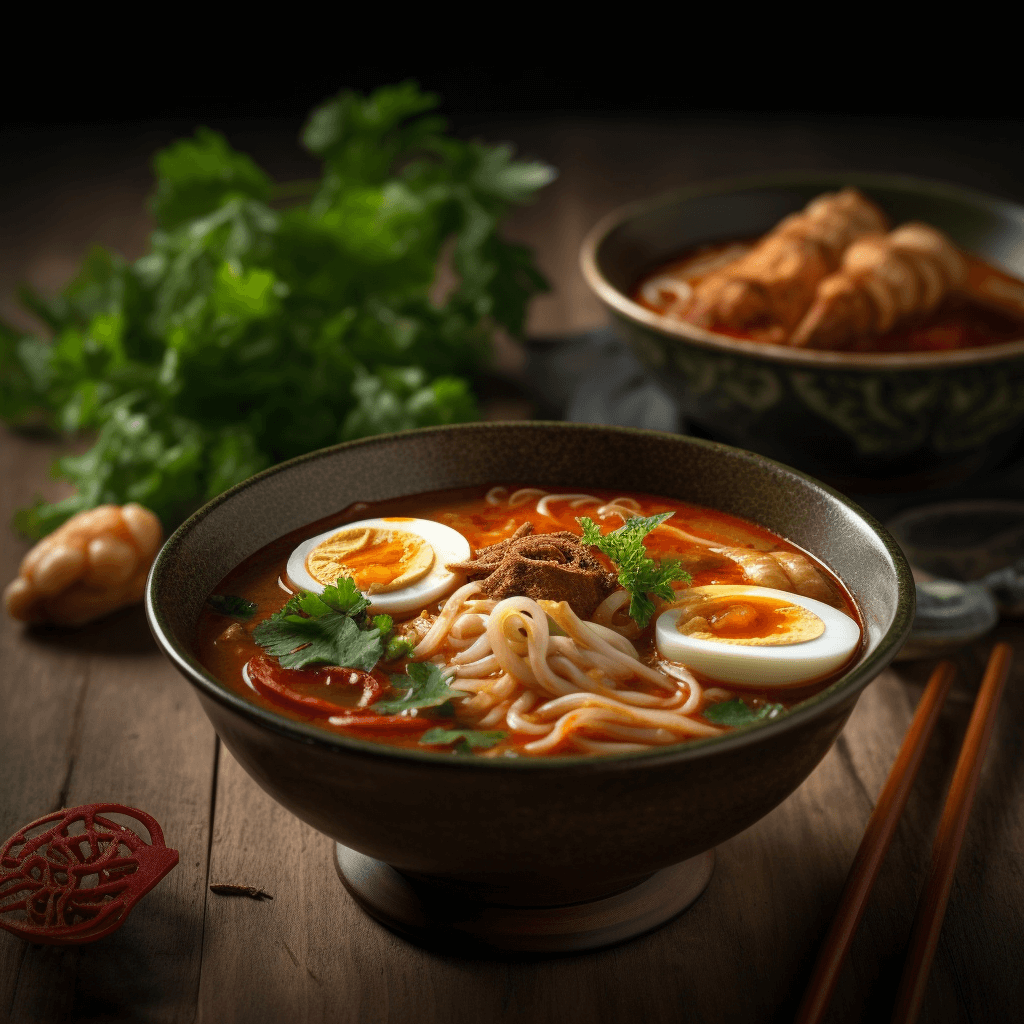
Nestled in the cultural melting pot of Malaysia, the Penang Asam Laksa has a rich and intriguing history that extends far beyond the borders of the island where it was born. This flavorful and fragrant dish, with its piquant broth and generous servings of fish, vegetables, and noodles, has captivated the taste buds of locals and visitors alike. Join us as we delve into the origins and evolution of this culinary marvel and discover the secrets behind its enduring appeal.
The Origins of Asam Laksa
To fully appreciate the Penang Asam Laksa, one must first understand the complex tapestry of cultures that influenced its creation. This delicious dish traces its roots back to the 15th century, when Chinese immigrants arrived in Malaysia, bringing with them their culinary traditions and techniques. Combining these practices with the abundance of local ingredients, the early settlers devised a unique fusion of flavors that would later give birth to the Asam Laksa.
It is believed that the Asam Laksa was inspired by a southern Chinese dish called "Loh Mee," a thick, hearty soup made with yellow noodles and a variety of seafood, vegetables, and spices. As the Chinese settlers intermingled with the local Malay population, the dish began to evolve, incorporating indigenous ingredients such as tamarind, pineapple, and mint leaves.
The Peranakan Influence
The Asam Laksa's journey took an interesting turn in the 19th century when the Peranakan community began to make its mark on the culinary landscape of Malaysia. The Peranakans, also known as Straits Chinese, were the descendants of early Chinese migrants who married local Malays, creating a distinct culture that combined both Chinese and Malay traditions.
The Peranakans played a pivotal role in refining the Asam Laksa, adding their unique blend of spices and herbs to the dish. It was during this time that the dish earned its moniker "Penang Asam Laksa," as it gained popularity in the bustling trading port of Penang. The influence of the Peranakans can still be tasted in the dish today, with its complex layering of flavors, including the delicate balance of sweet, sour, and spicy notes.
The Evolution of Penang Asam Laksa
Over the years, the Penang Asam Laksa has continued to evolve, adapting to the changing tastes and preferences of the Malaysian people. The dish has become synonymous with the island of Penang, and its rich history is celebrated in the many hawker stalls and restaurants that serve this delectable meal.
While the core elements of the dish remain the same, variations have emerged, reflecting the diversity of Malaysia's population. Some versions of Penang Asam Laksa include the addition of coconut milk, creating a richer, creamier broth. Others may feature different types of fish or additional spices, such as lemongrass or galangal, adding depth and complexity to the dish.
A Culinary Icon
Today, the Penang Asam Laksa is more than just a dish; it is a symbol of the island's vibrant history and the diverse cultures that have shaped its identity. Its mouthwatering flavors and tantalizing aroma have made it a favorite among food enthusiasts, earning it a place on the list of the world's most delicious foods.
As you savor the taste of Penang Asam Laksa, let its rich and flavorful broth transport you back in time, immersing you in the fascinating history and cultural tapestry that gave birth to this iconic Malaysian dish. From its humble beginnings as a fusion of Chinese and Malay cuisines to its status as a culinary icon, the Penang Asam Laksa remains a testament to the power of culinary innovation and cultural exchange. With each spoonful, you are not only indulging in a gastronomic delight but also partaking in a centuries-old tradition that continues to captivate the hearts and taste buds of food lovers around the world. As you explore the rich and diverse world of Malaysian cuisine, let the Penang Asam Laksa serve as a reminder of the enduring appeal of great food and its ability to bring people together across time and cultures.